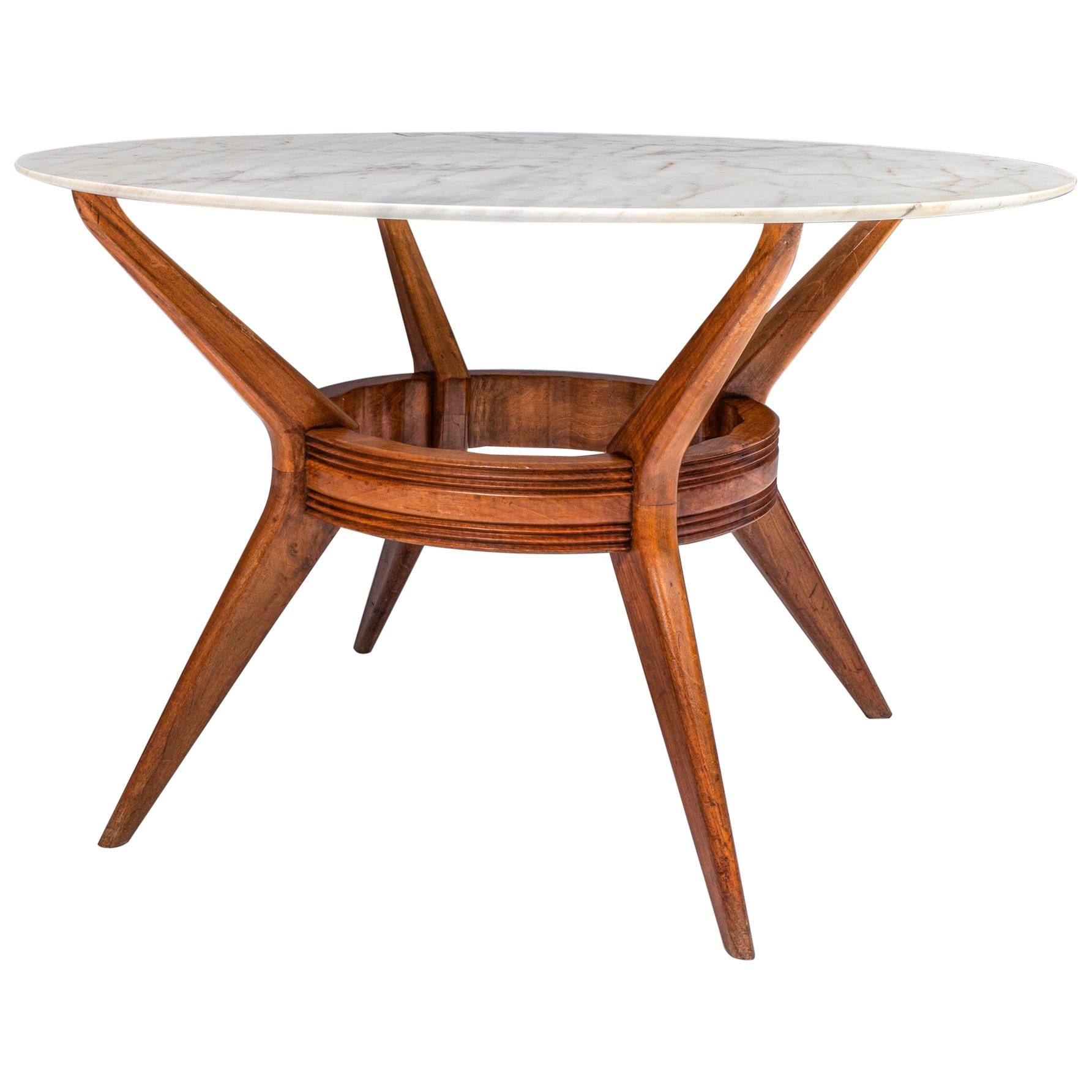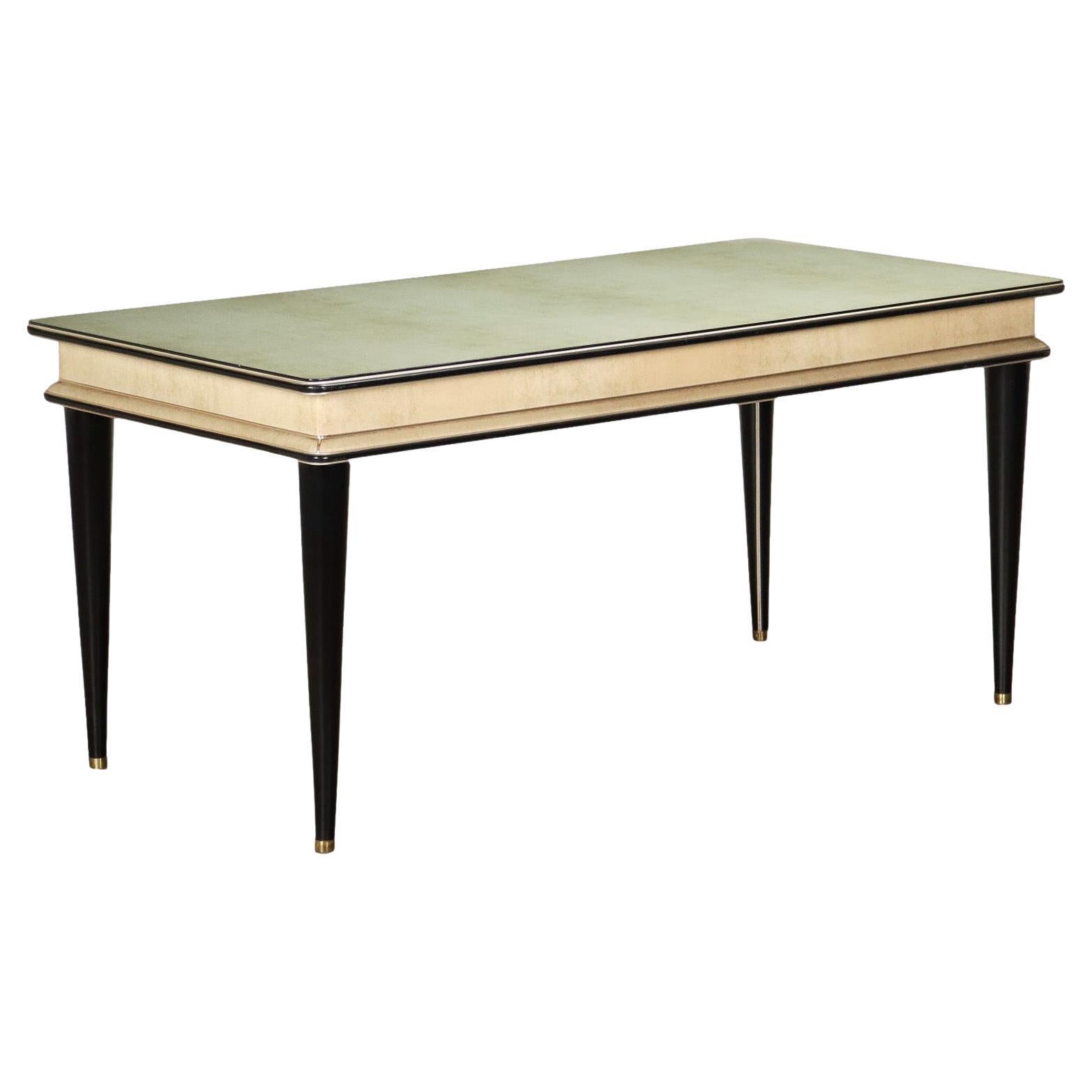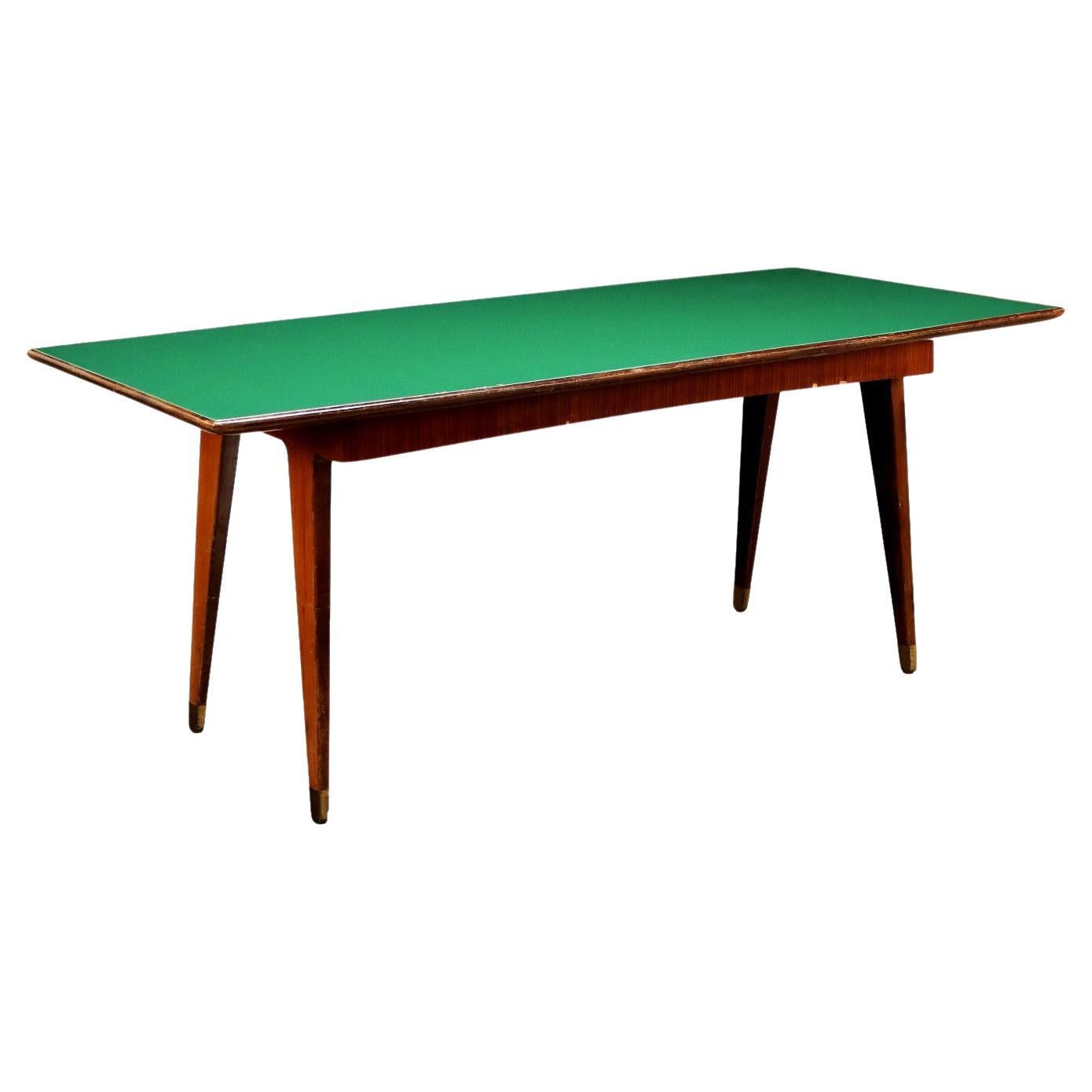Items Similar to Round Wood Table by Gregotti, Meneghetti, Stoppino for SIM, Italy, 1950s
Want more images or videos?
Request additional images or videos from the seller
1 of 7
Round Wood Table by Gregotti, Meneghetti, Stoppino for SIM, Italy, 1950s
About the Item
Table by Vittorio Gregotti, Lodovico Meneghetti and Giotto Stoppino for SIM, Novara.
Round top is supported by four legs opening in three parts reminding a tree trunk.
- Creator:
- Dimensions:Height: 27.56 in (70 cm)Diameter: 47.25 in (120 cm)
- Style:Organic Modern (Of the Period)
- Materials and Techniques:Wood
- Place of Origin:Italy
- Period:1950-1959
- Date of Manufacture:1950s
- Condition:Refinished. Wear consistent with age and use.
- Seller Location:Milan, IT
- Reference Number:1stDibs: LU945112104143
About the Seller
4.8
Recognized Seller
These prestigious sellers are industry leaders and represent the highest echelon for item quality and design.
Platinum Seller
These expertly vetted sellers are 1stDibs' most experienced sellers and are rated highest by our customers.
Established in 2005
1stDibs seller since 2012
513 sales on 1stDibs
Typical response time: 3 hours
Associations
20th Century Specialists
- ShippingRetrieving quote...Ships From: Milan, Italy
- Return PolicyA return for this item may be initiated within 7 days of delivery.
More From This SellerView All
- "Fasce Cromate" Game Table by Luigi Caccia Dominioni for Azucena, Italy, 1950sBy Luigi Caccia Dominioni, AzucenaLocated in Milan, IT"Fasce Cromate" T10 table by Luigi Caccia Dominioni for Azucena. Red cloth central top invites to use it as a desk or a games table. Two pieces available.Category
Vintage 1950s Italian Tables
MaterialsMetal
- "Lunario" Low Table by Cini Boeri for Gavina, Italy, 1970sBy Cini Boeri, GavinaLocated in Milan, ITIconic Lunario low table by Cini Boeri for Gavina. Polished chrome-plated brass base supports a large oval glass surface. One of the first exam...Category
Vintage 1970s Italian Tables
MaterialsMetal
- Large Rare Table by Studio Tetrarch for Bazzani, Italy, 1960sBy Studio Tetrarch, BazzaniLocated in Milan, ITLarge table by Studio Tetrach for Bazzani. Black lacquered straight frame supports a thick crystal top.Category
Vintage 1960s Italian Tables
MaterialsGlass, Wood
- One-off Oval Wood and Metal Table by Adelmo Rascaroli, Italy, 1960sLocated in Milan, ITCustom made Italian 60s oval wood dining table by Adelmo Rascaroli. Black metal base with brass feet and wood top.Category
Vintage 1960s Italian Tables
MaterialsMetal
- Extendible Squared Dining Table by Silvio Coppola for Bernini, Italy, 1960sBy Bernini, Silvio CoppolaLocated in Milan, ITExtendible dining table model 612.1 by Sivlio Coppola for Bernini. Sculptural walnut frame supporting a squared top with hidden wings and two white ceramic trays. Width goes from cms...Category
Vintage 1960s Italian Tables
MaterialsCeramic, Walnut
- "Serenissimo" Table by Lella and Massimo Vignelli for Acerbis, Italy, 1980sBy Acerbis, Massimo and Lella VignelliLocated in Milan, ITSerenissimo table by Lella and Massimo Vignelli for Acerbis. Four metal columns with venetian stucco finish support a large glass top.Category
Vintage 1980s Italian Tables
MaterialsMetal
You May Also Like
- Round Dining Table by Ariberto Colombo in Marble and Wood, Italy, 1950sBy Ariberto ColomboLocated in Amsterdam, NLThis round dining table has a remarkable wooden structure and a tabletop of white-grey marble from the Carrara region of Italy. It is very well preserved over the years and the color...Category
Vintage 1960s Italian Dining Room Tables
MaterialsCarrara Marble
- Gio Ponti Round Coffee Table in Walnut Wood Italian Manufacture 1950sBy Gio PontiLocated in Montecatini Terme, ITRound coffee table realized in walnut wood with metal details, the tabletop presents an elegant circular decorative motif. Attribuited to Gio Ponti, Italian manufacturer from the 1950s Gio Ponti was an icon of the modernist movement: the Italian designer, architect, artist and publisher contributed significantly to the worlds of architecture and design with his extensive work in fine furniture and ceramics, education, office and residential buildings, and everything in between. Giovanni, known as Gio Ponti was born in 1891 in Milan. It was there that he spent his childhood, and in 1921 he began to study architecture at the Politecnico di Milano. From 1923 to 1930 he served as the artistic director of the Richard-Ginori porcelain factory. In 1927, Ponti started his first architectural office, together with Emilio Lancia, and in 1928 he started the magazine Domus, which is still regarded as one of the most influential European magazines for architecture and design. He was also very influential during the period as a curator of the Milan Triennale. After his collaboration with Emilio Lancia had come to an end, upon completion of the Torre Rasini, he began to work as an architect together with the engineers Antonio Fornaroli and Eugenio Soncini...Category
Vintage 1950s Italian Mid-Century Modern Coffee and Cocktail Tables
MaterialsMetal
- Franco Albini TL30 Round Table in Metal and Wood for Poggi Pavia 1950s ItalyBy Franco Albini, PoggiLocated in Montecatini Terme, ITRound table model TL30 with black lacquered metal base and a wooden top. Designed by Franco Albini for Poggi, Pavia in 1950s. After spending his childhood and part of his youth in Robbiate in Brianza, where he was born in 1905, Franco Albini moved with his family to Milan. Here he enrolled in the Faculty of Architecture of the Polytechnic and graduated in 1929. He starts his professional activity in the studio of Gio Ponti and Emilio Lancia, with whom he collaborates for three years. He probably had his first international contacts here In those three years, the works carried out are admittedly of a twentieth-century imprint. It was the meeting with Edoardo Persico that marked a clear turning point towards rationalism and the rapprochement with the group of editors of “Casabella”. The new phase that that meeting provoked starts with the opening of the first professional studio in via Panizza with Renato Camus and Giancarlo Palanti. The group of architects began to deal with public housing by participating in the competition for the Baracca neighborhood in San Siro in 1932 and then creating the Ifacp neighborhoods: Fabio Filzi (1936/38), Gabriele D’Annunzio and Ettore Ponti (1939). Also in those years Albini worked on his first villa Pestarini. But it is above all in the context of the exhibitions that the Milanese master experiments his compromise between that “rigor and poetic fantasy” coining the elements that will be a recurring theme in all the declinations of his work – architecture, interiors, design pieces . The opening in 1933 of the new headquarters of the Triennale in Milan, in the Palazzo dell’Arte, becomes an important opportunity to express the strong innovative character of rationalist thought, a gym in which to freely experiment with new materials and new solutions, but above all a “method”. Together with Giancarlo Palanti, Albini on the occasion of the V Triennale di Milano sets up the steel structure house, for which he also designs the ‘furniture. At the subsequent Triennale of 1936, marked by the untimely death of Persico, together with a group of young designers gathered by Pagano in the previous edition of 1933, Franco Albini takes care of the preparation of the exhibition of the house, in which the furniture of three types of accommodation. The staging of Stanza per un uomo, at that same Triennale, allows us to understand the acute and ironic approach that is part of Albini, as a man and as a designer: the theme addressed is that of the existenzminimum and the reference of the project is to the fascist myth of the athletic and sporty man, but it is also a way to reflect on low-cost housing, the reduction of surfaces to a minimum and respect for the way of living. In that same year Albini and Romano designed the Ancient Italian Goldsmith’s Exhibition: vertical uprights, simple linear rods, design the space. A theme, that of the “flagpole”, which seems to be the center of the evolution of his production and creative process. The concept is reworked over time, with the technique of decomposition and recomposition typical of Albinian planning: in the setting up of the Scipio Exhibition and of contemporary drawings (1941) the tapered flagpoles, on which the paintings and display cases are hung, are supported by a grid of steel cables; in the Vanzetti stand (1942) they take on the V shape; in the Olivetti store in Paris (1956) the uprights in polished mahogany support the shelves for displaying typewriters and calculators. The reflection on this theme arises from the desire to interpret the architectural space, to read it through the use of a grid, to introduce the third dimension, the vertical one, while maintaining a sense of lightness and transparency. The flagpole is found, however, also in areas other than the exhibition ones. In the apartments he designed, it is used as a pivot on which the paintings can be suspended and rotated to allow different points of view, but at the same time as an element capable of dividing spaces. The Veliero bookcase...Category
Vintage 1950s Italian Mid-Century Modern Dining Room Tables
MaterialsMetal
- Italian Large Exotic Wood Coffee Table, 1950sLocated in Rome, ITA low and large table manufactured in Italy during the 1950s As we normally prefer, the original finish has been completely removed to bring the wood back to its original state, the...Category
Vintage 1950s Italian Mid-Century Modern Coffee and Cocktail Tables
MaterialsIron
- Table U. Mascagni Ebony Wood, Italy, 1950s-1960sBy Umberto MascagniLocated in Milano, ITTable; legs in ebonized wood, wooden top covered in skai, aluminum profiles, transparent glass on top.Category
Mid-20th Century Italian Mid-Century Modern Tables
MaterialsAluminum
- Table Exotic Wood Veneer Italy, 1950s-1960sLocated in Milano, ITTable with exotic wood veneered wooden base and brass tips, wooden top with back-treated glass.Category
Mid-20th Century Italian Mid-Century Modern Tables
MaterialsBrass
Recently Viewed
View AllMore Ways To Browse
Parts Table
Three Leg Round Table
Organic Round Table
Round Tree Table
Wood Tree Trunk Tables
Tree Trunk Table Top
Modern Counter Table
Andrianna Shamaris Coffe Tables
Andrianna Shamaris Coffee Table Wood
Small Round Black Table
Maison Jansen Argentina
70s Deco
Round Table Black With Marble
Round Table With Square Legs
Shamaris Teak Table
Engineering Table
Round White Marble Table Top
Small White Marble Table





